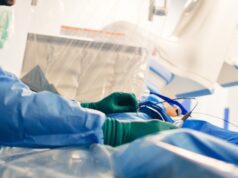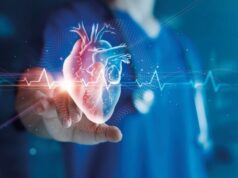By Dr Dirk J van Veldhuisen
Patients with mild heart failure may benefit clinically from a therapy currently recommended only in patients at more severe stages of the disease. Recently presented data show that cardiac resynchronisation therapy (CRT) can improve clinical status after 24 months of therapy as well as bring beneficial structural changes to the heart. These findings from the European population of the REVERSE trial were presented in March by study author Jean-Claude Daubert, a cardiologist at Centre Hospitalier Universitaire in Rennes, France, at the annual meeting of the American College of Cardiology (ACC).
Cardiac resynchronisation therapy, or biventricular pacing, is one of the most powerful therapies for advanced heart failure to have emerged in recent years. In patients NYHA classes III-IV, large-scale clinical trials have reported mortality reductions of 40% and major improvements in hospitalisation rates and quality of life. However, it has been an open question whether less ill patients might benefit from the therapy. REVERSE (sponsored by Medtronic) provides for the first time strong indications that this might be the case. Patients in REVERSE had mild heart failure NYHA classes I and II, and evidence of cardiac dyssynchrony on electrocardiogram. All patients were already receiving the optimal recommended medical therapy for their condition, including high doses of ACE inhibitors and betablockers.
The investigators were understandably excited about the findings. “We have long known that CRT is a very powerful therapy, and these very exciting results hold great promise for heart failure patients,” commented Dr Cecilia Linde at the Karolinska hospital in Stockholm, Sweden, coauthor of REVERSE. “The progressive nature of heart failure means that if we could intervene with effective therapies earlier in the disease, this might have a greater positive impact than trying to stem the decline in patients’ conditions at later, more severe stages.”
The primary results of the international population of REVERSE, presented at ACC in 2008, indicated significant benefits with cardiac resynchronisation therapy on cardiac structure, but these did not translate into clinical benefits over 12 months (published in the Journal of the American College of Cardiology 2008 52;23:1834-43). The differences on the primary endpoint, a composite of clinical variables, were not significant between the group receiving cardiac resynchronisation therapy (CRT-on) and the control (CRT-off) group. However, in the European population followed in a blinded fashion for 24 months, the CRT-on group had significantly fewer patients with worsening status than the CRT-off group: 19% vs. 34%.
Moreover, 54% of patients receiving cardiac resynchronisation therapy improved their clinical status after 24 months, compared with 29% of patients on the CRT-off group. (That a considerable number of patients improve in control groups is commonly observed in clinical trials, where patients tend to receive improved therapies and closer surveillance than in everyday clinical practice.) These numbers are particularly impressive as many patients in NYHA I-II have no or only mild symptoms, making improvements difficult to achieve.
Perhaps the most impressive benefits of cardiac resynchronisation therapy were on the combined endpoint of heart failure hospitalisation or death. Death rates were low overall, but CRT patients had 62% relative risk reduction compared with the CRT-off group (Figure), mostly from lower risk for hospitalisation. Hospitalisations are a major reason why heart failure is a very costly disease, both to individuals and to society. The REVERSE analysis at 24 months was designed to study the impact of cardiac resynchronisation therapy on healthcare costs. Drs Linde and Daubert expect to have these results towards the end of 2009.
It is too early to say what future role cardiac resynchronisation therapy may have in mild heart failure. Invasive procedures such as cardiac resynchronisation therapy implantations carry some risk and the risk-benefit relationship must be assessed in individual cases. In REVERSE, 11% of the patients suffered complications which were mostly mild. It is conceivable that patients in NYHA class II with reduced ejection fraction, who are currently candidates for implantable cardioverter defibrillator therapy, might benefit from CRT-D (combined CRT and defibrillator) if they have symptoms of dyssynchrony. In such patients, the added risk would be limited to the third electrode needed for the cardiac resynchronisation therapy function.
REVERSE alone is not likely to lead to a change in guidelines recommendations, however. There is no recommendation of resynchronisation therapy for NYHA I-II patients in current ESC HF guidelines and solid evidence from several trials would be needed to effect a change. Indeed, the latest guidelines note as an open question whether “CRT improve[s] clinical outcome in patients with a low LVEF, a wide QRS but mild symptoms”. REVERSE has brought us closer to the answer.
Dr Dirk J van Veldhuisen is Professor of Cardiology, University Medical Centre, Groningen, The Netherlands.













